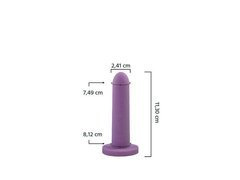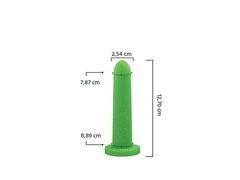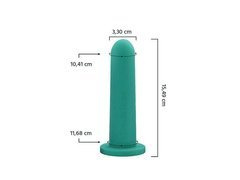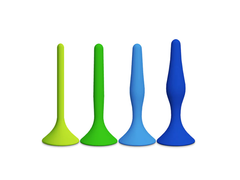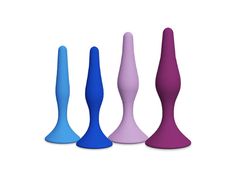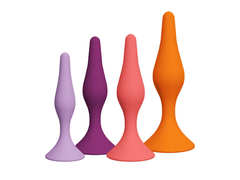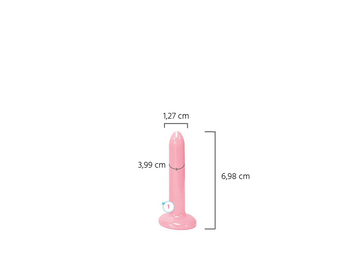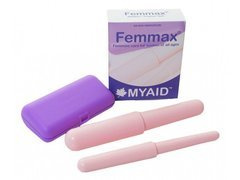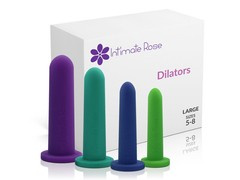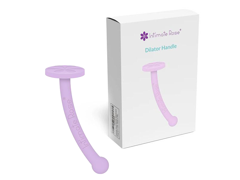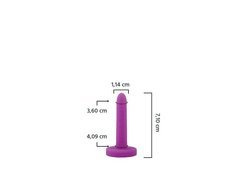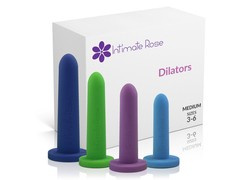Dilators
( number of products: 21 )A vaginal dilator is a device used to treat various types of vaginal pain, including vaginismus, vulvodynia, and vestibulodynia. Their purpose is to gradually dilate the vaginal walls. When choosing a dilator, it's important to consider high-quality workmanship and the variety of sizes available, which will improve ease of use and allow for gradual therapy.
What Are Vaginal and Rectal Dilators?
Dilators are therapeutic medical tools designed to gently stretch and relax the vaginal or rectal tissues. They are most often used to support rehabilitation in conditions where muscle tension, scar tissue, or pain limit natural flexibility or comfort in the pelvic area. Made from body-safe materials and available in various sizes, dilators allow for gradual, controlled progression, helping to restore normal function and comfort over time.
Vaginal and rectal dilators are frequently prescribed by physiotherapists, gynecologists, or urologists as part of a pelvic floor therapy program. Their use can be essential in addressing issues such as vaginismus, dyspareunia (painful intercourse), pelvic floor hypertonicity, vaginal stenosis, or pain following surgery or radiation therapy. By promoting relaxation and desensitization, dilators help improve both physical comfort and emotional confidence during recovery.
How Dilator Therapy Works
Dilator therapy focuses on gradual tissue adaptation through gentle stretching and relaxation. The process involves inserting the smallest dilator comfortably into the vaginal or rectal canal and slowly progressing to larger sizes as tolerance increases. This gentle approach retrains the muscles to relax instead of tightening in response to pressure or touch, helping to re-establish natural elasticity and comfort.
Regular sessions, typically guided by a healthcare professional, also enhance blood circulation, tissue flexibility, and neuromuscular coordination. The therapy helps reduce fear and discomfort associated with penetration, medical examinations, or sexual activity. Over time, patients often regain confidence, ease of movement, and improved pelvic function.
Indications for Use
Dilators are a valuable component of pelvic rehabilitation for a variety of clinical and functional conditions, including:
-
Vaginismus and dyspareunia (pain or tightness during intercourse)
-
Post-surgical recovery, such as after hysterectomy or vaginal reconstruction
-
Pelvic radiation therapy, which can lead to tissue stiffness and narrowing
-
Menopause-related vaginal atrophy
-
Postpartum healing, when scar tissue limits flexibility
-
Transgender postoperative care, to maintain vaginal depth and elasticity after gender-affirming surgery
-
Pelvic floor hypertonicity or chronic pelvic pain
Benefits of Using Dilators
Consistent and correct use of dilators can provide multiple therapeutic benefits:
-
Increased tissue flexibility and elasticity
-
Reduced pain and sensitivity during pelvic examinations or intercourse
-
Improved blood flow and healing in the pelvic area
-
Enhanced comfort and confidence in daily and intimate activities
-
Restoration of normal pelvic muscle function
Many patients also find that dilator therapy supports emotional well-being. It helps them regain control of their body, overcome anxiety related to pain, and develop a positive connection with pelvic health.
Design and Materials
Modern dilators are designed with both medical precision and user comfort in mind. They are typically made from hypoallergenic, body-safe materials such as medical-grade silicone or smooth plastic. Their ergonomic shape allows for easy insertion and handling, and many sets include progressive sizes to match each stage of therapy. Some models feature a curved or tapered tip for anatomical comfort, while others have a smooth cylindrical shape ideal for uniform stretching.
In some cases, dilators can be used together with pelvic floor electrostimulation or biofeedback therapy, providing a comprehensive approach to rehabilitation.
Using Dilators Safely
Before beginning therapy, it’s important to consult a pelvic floor physiotherapist or gynecologist, who can guide correct use and help create a personalized treatment plan. Therapy should always be performed gently and without pain. A water-based lubricant is recommended to improve comfort and reduce friction.
Sessions typically start with a few minutes of relaxation and breathing exercises to calm the pelvic muscles. The dilator should then be inserted slowly, held in place for several minutes, and gently moved if tolerated. Over time, patients can progress to larger sizes as the tissues become more flexible and comfortable.
Integration with Pelvic Floor Rehabilitation
Dilator therapy works best as part of a comprehensive pelvic rehabilitation plan, which may include:
-
Pelvic floor relaxation exercises
-
Biofeedback or electrostimulation therapy
-
Manual physiotherapy techniques
-
Mindfulness and breathing techniques
-
Education about posture and pelvic awareness
This integrated approach addresses both the physical and psychological aspects of pelvic pain or dysfunction, helping patients achieve lasting results.
Emotional and Psychological Aspects
Pelvic pain and dysfunction often affect self-esteem and quality of life. Dilator therapy can play an important role in restoring emotional balance by helping patients reconnect with their body in a safe and controlled way. Many users experience reduced anxiety, improved body awareness, and renewed confidence in intimacy.
Choosing the Right Dilator Set
When selecting a dilator, factors such as material, shape, flexibility, and size range should be considered. Medical-grade silicone dilators are generally the most comfortable and hygienic, while rigid plastic models may provide more precise stretching. Sets with graduated sizes allow smooth progression and personalized pacing.
At PelviCare, we offer a carefully curated selection of vaginal and rectal dilators designed for safety, comfort, and effectiveness. Our products are suitable for clinical use and home therapy, helping patients rebuild comfort, function, and confidence step by step.
Summary
Dilators are essential tools in pelvic floor rehabilitation, supporting patients with pain, tension, or narrowing of pelvic tissues. Through consistent and guided use, they promote flexibility, relaxation, and confidence—enabling a safe return to comfort and normal function. Whether used for physical recovery, pain management, or preparation for intimacy, dilator therapy is a proven and empowering method for improving pelvic health and quality of life.




